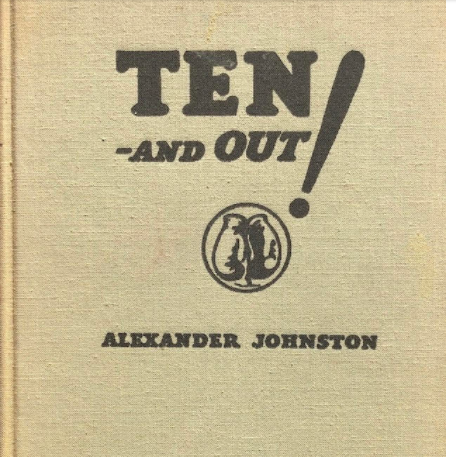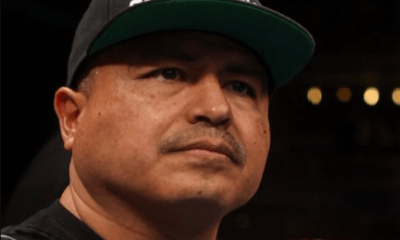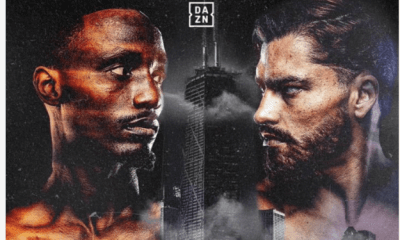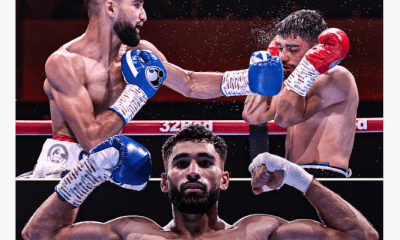Featured Articles
Thomas Hauser’s Literary Notes: Reading Old Books

Old books can be enlightening and a pleasure to read. I’m not talking now about classics. Just good old books that have been largely forgotten.
A well-written old book offers a window onto the distant past. The facts and scenes might be replicated in works written today. But there’s a different feel to the way that authors of old books presented and interpreted their subject matter within the context of their time.
This article is about non-fiction books written about boxing in the 1920s and earlier. Some notable writers authored novels about the sweet science during that time. Jack London wrote The Game in 1905 and The Abysmal Brute in 1913. George Bernard Shaw penned Cashel Byron’s Profession in 1882. Historian Randy Roberts reminds us that “a novel can sometimes get at deeper truths in a way that a legitimate historian can’t.”
Be that as it may; this inquiry is limited to non-fiction. In that regard, Roberts cautions, “These old books are historical sources. And you have to weigh them like any other historical source in terms of accuracy. What can you confirm? What biases did the writer have? How much attention did the writer pay to detail? If the writer saw a fight himself, it might add credibility to his narrative. But I rarely use these books as the gospel truth.”
Adam Pollack has written a series of exhaustively researched biographies about boxing’s early gloved champions.
“I like accuracy, detail, and truth,” Pollack says. “And the books you’re talking about have very little verification of facts and almost no citation of sources. The authors might have done the best job they could, given the limited resources they had to tap into. But these old books are filled with errors. Writing today, I have the advantage of modern research tools and can access primary sources like old newspaper accounts online.”
And what about the autobiographies by John L. Sullivan, James J. Corbett, Jack Johnson, and their brethren?
“For the fighters’ own personal feelings and certain insights into how they thought about things, those books are okay,” Pollack answers. “But if you’re looking for accuracy, forget it. Most of the old autobiographies are self-serving and wildly inaccurate. And most of the time, these guys were talking years later off the top of their head. And they were hit in the head a lot.”
Historian Clay Moyle echoes Pollack’s thoughts, saying, “People who were writing a hundred years ago couldn’t go to BoxRec.com to check on the details of a fight. Writing today, I can go into newspaper archives online, read twenty different articles written about the same fight, and piece the jigsaw puzzle together. Today’s research tools are simply better than what writers had to work with a century ago.”
With these caveats in mind, I decided to read an old boxing book. I chose Ten and Out: The Complete Story of the Prize Ring in America by Alexander Johnston.
“Complete” is a relative term. The book was published in 1927 shortly after Gene Tunney defeated Jack Dempsey in their “long count” rematch to solidify his claim to the heavyweight championship of the world. Joe Louis had yet to reign. Rocky Marciano was four years old. Muhammad Ali and Mike Tyson were unimaginable.
Johnston did his best to be an accurate historian. Indeed, he referenced some of the same issues that Roberts, Pollack, and Moyle flagged a century later, acknowledging, “In digging back into the pugilistic records of this country, the chronicler is confronted by many difficulties. In the early days, records were carelessly kept or altogether neglected. For many of the records, we have to depend on the shifting minds of managers or even the fighters themselves, obviously not the most unbiased testimony that could be obtained. We must rely on the stories of eye-witnesses. And spectators at prize fights are not the most reliable recorders.”
Ten and Out begins with a look at prize fighting in England and then, as its title suggests, moves to America. Johnston called boxing “the most exciting form of sport in which man has ever engaged,” and added, “Fighting with the fists is not a gentle sport. Blood will be shed, eyes will be blackened, and there may be accidents of a more serious nature.” He chronicled what he called boxing’s “thuggish past” and its evolution to “a more respectable present,” writing, “The bare knuckle days of the prize ring in America were distinctly a bad time. Anyone who talks of ‘the good old days of real fighting’ is absolutely wrong. They were the bad old days, and the great sport of boxing lived through them because it had inherent rough virtues of its own.”
Johnston’s work focused in large measure on heavyweights. In his hands, major championship fights were well told, particularly those that involved the violent transfer of power from one champion to another.
Writing about James Corbett’s 1892 conquest of John L. Sullivan at the Olympic Club in New Orleans, Johnston recounted, “Sullivan’s strength, speed, hitting power, fighting instinct, and ring ferocity would have made him a great fighter in any generation. [But] in Corbett, he met the first exponent of a new boxing generation which was to carry ring skill far beyond anything that Sullivan’s era had known. The old boxing could not meet the new skill on even terms. Sullivan relied on paralyzing punching but you can’t paralyze a man who refuses to be hit. Corbett was the first real student of boxing. He was always trying new blows and perfecting his delivery of the old ones. He studied defense. Even in the ring, he was perpetually studying the man opposite him.”
Then, in 1897, Corbett fell prey to Bob Fitzsimmons.
“They had broken from a clinch near the center of the ring,” Johnston wrote. “Jim feinted as if to start one of his left hooks for Bob’s jaw when suddenly Fitz straightened up a bit, shot out a long left to the champion’s chin, and then, shifting his feet, drove home his right with all the force of his gigantic shoulders behind it to a place just to the right of the heart where the diaphragm begins. Corbett started to fall forward, and Fitz cracked the jaw again with his left but the last blow was unnecessary. The ‘solar plexus’ blow had done the trick. Gentleman Jim lay and listened to the fateful count. He says that he was conscious when the fatal ‘ten’ was being counted but that he was absolutely paralyzed. So the first champion of the new dispensation in the boxing game had gone and a new king reigned in his stead, even as he had replaced the mighty Sullivan on the throne.”
Fitzsimmons was followed by James Jeffries, who was regaled as a “giant” of a man (which he was for his time). The “giant” stood a shade over 6-feet-1-inch tall and weighed 220 pounds. Johnston believed that, at his peak, “Jeffries could have hammered into submission any pugilist that ever took the ring.”
Then Jeffries retired and, after Marvin Hart and Tommy Burns, Jack Johnson ascended to the throne.
Johnston called the search for a great white hope to beat Johnson “one of the saddest chapters in the history of the heavyweight prize ring in America,” adding, “Whatever may have been Jack Johnson’s failings in personal behavior, he was a fighter. Some competent critics consider him the greatest fighter that ever lived. He was a master boxer with an almost perfect defense and also a smashing wallop. Johnson had learned in his hundreds of ring battles the art of using only as much energy as was needed to carry out any given maneuver of offense or defense. He never allowed himself to be hurried. He conserved his resources of strength and stamina. And when the time came, he was ready for the finisher.”
Johnson was succeeded by Jess Willard. Then, in 1919, Jack Dempsey became king.
“Dempsey,” Johnston wrote, “believed thoroughly that the best defense is a good offense. From the moment the first gong rang, he was at his man. He seemed to burn in the ring with a cold white fighting rage that made it impossible to call on finesse. His one idea was to get at his man and knock him horizontal. He plunged in almost wide open, leaving innumerable chances for a skilled opponent to hurt him. He had, though, excellent recuperative powers and he was a vicious hitter. His most outstanding quality as a fighter was his fighting spirit. He carried more than his share of the ‘killer instinct.’ Given his terrific lust for battle with a killing punch in either hand and a physique able to stand up under punishment, we have a very formidable fistic gladiator.”
Recreating the moment in Willard’s corner after the third round of the carnage inflicted on him by Dempsey’s fists, Johnston wrote, “The champion’s seconds worked over him. Walter Monahan, who had charge of his corner, said, ‘Jess, do you think you can go on?'”
“‘I guess I’m beaten,’ Willard answered. “I can’t go on any longer.'”
“Monahan at once threw a towel into the center of the ring.”
“Willard did not quit,” Johnston wrote. “He was smashed to a bruised and broken object of pity. As they took him from the ring, his jaw drooped foolishly like a gate that had lost one hinge. If he had gone up for another round, there might have been a fatality.”
Johnston had a way with words.
Regarding Jack Johnson’s demolition of James Jeffries when the latter attempted an ill-advised comeback at age 35 (six years after he’d retired from the ring), Johnston turned the race issue upside down, writing of Johnson, “In the middle of the third round, it seems to have dawned on him that he was this man’s master.”
Later, setting the scene for the 1921 bout between Dempsey and George Carpentier (boxing’s first million-dollar gate), Johnston observed, “Following his usual custom, Dempsey went into the ring with several day’s growth of beard on his face. As he sat glowering across at the clean-shaven Carpentier, he looked like a ferocious tramp about to assault a Greek god.”
There’s also an occasional nod to humor.
Prior to challenging Corbett for the heavyweight crown, Fitzsimmons and an acquaintance named Robert H. Davis listened as Mrs. Fitzsimmons prayed to God for her husband’s victory and safety. Davis suggested to the fighter that he do the same, and Fitzsimmons shook his head, saying, “If He won’t do it for her, He won’t do it for me.”
There were parts of Ten and Out that I skimmed when reading through it. I didn’t feel an obligation to Johnston to read his description of every fight and the events surrounding it. But there’s something satisfying in good writing about boxing’s early heavyweight champions as written in their time. It draws a reader closer to these remarkable men and the era in which they lived.
A book that was good when it was written will always have something to offer despite the passage of time.
* * *
Allow me, if you will, this non-boxing literary note. . .
Recently, I was going through a cabinet and came across a letter that was written to me in 1958 when I was twelve years old. The correspondent was Howard Pease.
For the uninitiated (which includes almost everyone reading this column), Pease was born in Stockton, California in 1894 and lived in San Francisco for most of his life. He served in the United States Army during World War I and shipped out on several occasions afterward as a crew member on freighters to gather material for books that he was writing.
Pease crafted adventure stories aimed primarily at boys age twelve and older. Many of his books were set on tramp steamers. His first published novel – The Tattooed Man (1926) – introduced the character of Tod Moran, a young merchant mariner who, during the course of thirteen books, works his way up from boiler-room wiper to first mate. Pease also wrote seven non-Tod-Moran novels and two children’s stories. To make ends meet, he taught high school English and, later, was an elementary school principal. He died in 1974.
Pease wanted to show his young readers what the real world was like. His books touched on themes like racism, drug addiction, and struggles between labor and management. In 1939, speaking at a gathering of four hundred librarians, he decried the children’s literature then being published and declared, “We attempt to draw over their heads a beautiful curtain of silk. Let’s catch up with our children, catch up with this world around us. Let’s be leaders, not followers, and let’s be leaders with courage.”
Writers as diverse as E.L. Doctorow and Philip Roth cited Pease’s books as influencing their childhood. Robert Lipsyte (a much-honored sports journalist who has written several award-winning novels for young adults) said recently, “I loved Howard Pease. His books took you somewhere. You could travel with his characters. They were long books, but I tore through them. Reading them was a formative experience for me. When you write for young adults, you’re also functioning as a teacher. And Pease did that. I wish we had more books like that now.”
By age twelve, I’d read all of Pease’s books with the exception of Mystery on Telegraph Hill (which wasn’t published until 1961) and The Gypsy Caravan (which had been written in the early-1920s, published in 1930, and wasn’t available in any of the local libraries where I foraged for books). This was before the Internet and sites like AbeBooks.com. So, I wrote to Pease in care of his publisher, asking where I could get a copy of The Gypsy Caravan. Several weeks later, an envelope addressed to me arrived in the mail with a return address that read, “Howard Pease, 1860 Ora Avenue, Livermore, California.”
Inside, a neatly-typed letter dated October 12, 1958, began, “Dear Tom Hauser, It was a pleasure indeed to get your letter. The Gypsy Caravan was my first book and is now out of print. I’m afraid you will not be able to find a copy anywhere. I’ve looked for some without any success. However, that book was aimed at younger readers than you.”
Pease then recounted that Thunderbolt House was his favorite of the books he’d written, followed by The Dark Adventure, Heart of Danger, and The Tattooed Man. “My most successful book in sales,” he added, “has been The Jinx Ship, a book I do not care for much.” He closed with “Cordially yours” followed by “P.S. In 1946, I spent the summer not too far from your home on Bell Island near Rowayton, Connecticut. Enjoyed it a lot, too.”
In today’s world, I can go to AbeBooks.com and, with a few clicks, order a copy of The Gypsy Caravan.
Pease’s books are more expensive now than most young adult literature from his era. He still has a following among older readers who fondly remember his tales from when they were young.
I have two books by Pease in my home library – The Jinx Ship (published in 1927) and Shipwrecked (1957). Last week, I decided to spend a night reading The Jinx Ship. My copy has “Discard Mt. Pleasant Library” stamped on the front and back end pages. My best guess is that I picked it up at a book sale decades ago.
Stylistically, Pease wrote in a way that was fit for grown-ups but also accessible to young adults. The Jinx Ship is 313 pages long and gives readers a feel for what it was like to be a crewman on a tramp streamer almost a century ago. The plot holds together reasonably well with twists that include gun-running, murder, and a voodoo ceremony on a Caribbean island. On the downside, there are demeaning racial stereotypes typical of the 1920s and the culture that Pease was writing about. The “N-word” appears frequently in dialogue.
After I finished reading The Jinx Ship, I reread Pease’s letter. The paper has aged; the letter was written 63 years ago. But it’s still in good condition.
“My most successful book in sales,” Pease wrote, “has been The Jinx Ship, a book I do not care for much.”
Why didn’t he care for his most commercially-successful novel? The romantic in me would like to think that, as an author who confronted racism in his later work, Pease came to have misgivings about that component of his earlier writing. I’ll never know. I do know that getting his letter meant a lot to me when I was twelve years old. It still does.
Thomas Hauser’s email address is thomashauserwriter@gmail.com. His most recent book – Broken Dreams: Another Year Inside Boxing – was published by the University of Arkansas Press this autumn. In 2004, the Boxing Writers Association of America honored Hauser with the Nat Fleischer Award for career excellence in boxing journalism. In 2019, Hauser was selected for boxing’s highest honor – induction into the International Boxing Hall of Fame.
To comment on this story in the Fight Forum CLICK HERE
-

 Featured Articles4 weeks ago
Featured Articles4 weeks agoResults and Recaps from New York Where Taylor Edged Serrano Once Again
-

 Featured Articles1 week ago
Featured Articles1 week agoThe Hauser Report: Zayas-Garcia, Pacquiao, Usyk, and the NYSAC
-

 Featured Articles3 days ago
Featured Articles3 days agoOscar Duarte and Regis Prograis Prevail on an Action-Packed Fight Card in Chicago
-

 Featured Articles3 weeks ago
Featured Articles3 weeks agoResults and Recaps from NYC where Hamzah Sheeraz was Spectacular
-

 Featured Articles4 weeks ago
Featured Articles4 weeks agoFrom a Sympathetic Figure to a Pariah: The Travails of Julio Cesar Chavez Jr
-

 Featured Articles2 weeks ago
Featured Articles2 weeks agoManny Pacquiao and Mario Barrios Fight to a Draw; Fundora stops Tim Tszyu
-

 Featured Articles4 weeks ago
Featured Articles4 weeks agoPhiladelphia Welterweight Gil Turner, a Phenom, Now Rests in an Unmarked Grave
-

 Featured Articles2 weeks ago
Featured Articles2 weeks agoArne’s Almanac: Pacquiao-Barrios Redux




















